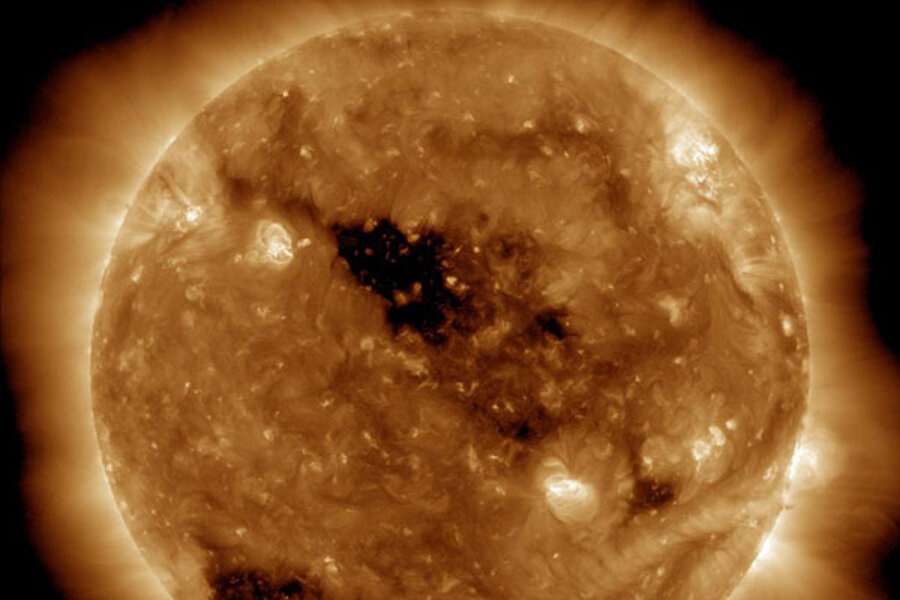These are weak spots in the magnetic field of the sun's corona that allow protons and electrons to leave the star a speeds of around 1.7 million miles an hour. This release is known as fast solar wind, in contrast to the slow solar wind, which constantly streams from the sun at 900,000 miles an hour from along the sun's equatorial regions. During the low point in the 11-year sunspot cycle, these holes usually are found near the sun's poles. But during the peak of the cycle they can crop up almost anywhere on the sun. They tend to appear near the sun's equator as sunspot activities declines during a sunspot cycle. Holes appearing at this location trigger the strongest effects on Earth's space weather. The fast solar wind can trigger mild disruptions in Earth's magnetic field, which can induce relatively small voltage spikes on long-distance power-transmission lines and disrupt radio communications in polar regions. In addition, these fast particles leaking through the coronal hole can brighten up the auroras.
 Mark Sappenfield
Mark Sappenfield
Dear Reader,
About a year ago, I happened upon this statement about the Monitor in the Harvard Business Review – under the charming heading of “do things that don’t interest you”:
“Many things that end up” being meaningful, writes social scientist Joseph Grenny, “have come from conference workshops, articles, or online videos that began as a chore and ended with an insight. My work in Kenya, for example, was heavily influenced by a Christian Science Monitor article I had forced myself to read 10 years earlier. Sometimes, we call things ‘boring’ simply because they lie outside the box we are currently in.”
If you were to come up with a punchline to a joke about the Monitor, that would probably be it. We’re seen as being global, fair, insightful, and perhaps a bit too earnest. We’re the bran muffin of journalism.
But you know what? We change lives. And I’m going to argue that we change lives precisely because we force open that too-small box that most human beings think they live in.
The Monitor is a peculiar little publication that’s hard for the world to figure out. We’re run by a church, but we’re not only for church members and we’re not about converting people. We’re known as being fair even as the world becomes as polarized as at any time since the newspaper’s founding in 1908.
We have a mission beyond circulation, we want to bridge divides. We’re about kicking down the door of thought everywhere and saying, “You are bigger and more capable than you realize. And we can prove it.”
If you’re looking for bran muffin journalism, you can subscribe to the Monitor for $15. You’ll get the Monitor Weekly magazine, the Monitor Daily email, and unlimited access to CSMonitor.com.






